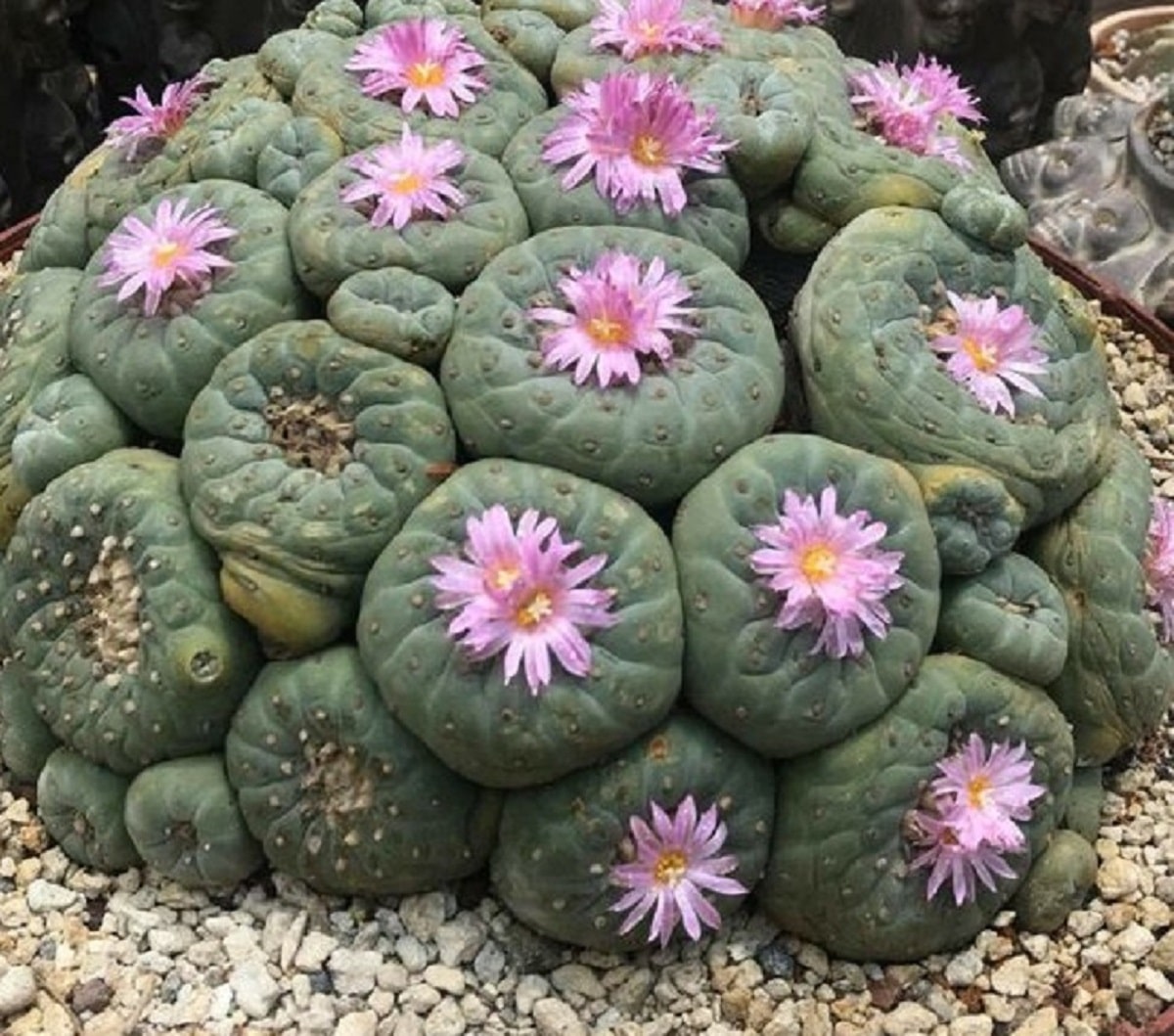The world of cacti is diverse and mesmerizing, showcasing an array of shapes, sizes, and striking colors. Among these fascinating flora, Lophophora williamsii, commonly known as the peyote cactus, stands out not only for its unique aesthetic appeal but also for its profound historical significance and intriguing characteristics. This guide delves deep into the myriad aspects that make Lophophora a subject of admiration for both enthusiasts and experts alike.
As a quintessential member of the Cactaceae family, Lophophora williamsii beckons with a mysterious charm. Its diminutive stature and almost chubby appearance are captivating, resembling little green buttons nestled in their native arid landscapes. The allure of Lophophora lies not just in its charming visage but in its multifaceted identity, steeped in rituals and traditional uses that resonate through centuries.
Venturing into the specifics of its morphology elucidates why Lophophora is often sought after not only for ornamental purposes but also for its ethereal qualities. Understanding its botanical characteristics lays the foundation for appreciating its aesthetic allure.
Among the most striking features of Lophophora is its ribbed, globular body. Usually adorned in shades of green, its surface is often flecked with a powdery coating known as bloom, which serves a dual purpose—hygroscopic adaptation and aesthetic enhancement. This surface texture conceals a reservoir of moisture, a remarkable survival strategy that ensures its longevity in inhospitable environments.
The flowers of Lophophora are another sublime aspect that needs special attention. Emerging from the apex during the summer months, these floral appendages are often pink to white, exuding a gentle fragrance that attracts a multitude of pollinators. The ephemeral nature of these blooms adds an element of intrigue, as they bloom only for a limited duration, a fleeting gift to the observer.
Furthermore, it is vital to consider the intriguing complexity of Lophophora’s reproduction. This species can reproduce both sexually and asexually, displaying a dexterity that enhances its survival chances. Seed production is facilitated by pollination, while offsets allow it to propagate swiftly across the arid terrains where it thrives. This duality mirrors adaptability—each method is an evolutionary portrait, underscoring Lophophora’s tenacity in nature.
Exploring the environmental preferences of Lophophora reveals insights into its epidermal resilience. Thriving in the limestone outcrops and sandy soils of Mexico and the southwestern United States, this cactus demonstrates an extraordinary concept known as xerophytism—an adaptation to survive in extreme aridity. Such attributes enhance its visual appeal in garden settings, inviting enthusiasts to cultivate a piece of the desert’s mystique.
While the aesthetics of Lophophora are indeed compelling, its cultural significance is another facet worth exploring. Historically, this cactus has been integral to indigenous cultures, primarily in Mexico, where it has been used for millennia in spiritual rituals and traditional medicine. The psychoactive properties imbued within its flesh, attributed to the alkaloids mescaline and others, elevate its status beyond mere horticulture. The profound spiritual experiences associated with peyote have fostered a rich tapestry of tradition and reverence.
The art of using Lophophora in traditional practices showcases the intersection of natural beauty and human spirituality. The rituals surrounding peyote consumption emphasize introspection, self-discovery, and communion with the divine. These elements contribute to the cactus’s mystique, transforming a simple plant into a powerful cultural symbol that transcends its geographical roots.
The cultivation of Lophophora also warrants attention, particularly for those looking to incorporate this cactus into their gardens or collection. Optimal growth conditions emulate its native habitat—well-draining soil, bright but indirect sunlight, and an appropriate watering regimen that mirrors its natural drought resistance. Such considerations not only promote healthy growth but also ensure that the cactus maintains its characteristic beauty.
However, enthusiasts must also tread carefully. The popularity of Lophophora and its role in traditional rituals has led to conservation concerns. Overharvesting, coupled with habitat loss, poses significant threats to its populations in the wild. Those who cultivate Lophophora are encouraged to do so responsibly, sourcing plants from reputable nurseries that follow ethical guidelines and support conservation efforts.
Furthermore, understanding the legal landscape surrounding Lophophora adds another layer of complexity for potential cultivators. The psychoactive compounds found in this cactus render it a controlled substance in several countries, including the United States. Familiarizing oneself with local laws is crucial for those considering the cultivation of Lophophora, ensuring that both legal and ethical standards are upheld.
In addition to its cultural and ecological significance, Lophophora’s aesthetic qualities make it an enduring favorite among collectors and hobbyists. Its unique form and subtle hues provide a perfect balance of simplicity and elegance, making it a coveted choice for modern landscapes, minimalistic garden designs, and ornamental displays. The juxtaposition of its compact growth habit against more sprawling succulents creates visual intrigue that captivates the observer.
Moreover, Lophophora can be paired creatively with other succulents, enhancing its visual narrative within a garden. The contrast between the smooth, rounded contours of Lophophora and the sharp structures of various euphorbias provides a compelling tableau, evoking a sense of harmony and balance. Careful consideration of color, texture, and form in plant arrangements can transform Lophophora into a focal point, further intensifying its aesthetic presence.
In conclusion, Lophophora williamsii is more than just a cactus; it is a botanical marvel that encapsulates the complexities of nature, culture, and aesthetics. Its striking appearance, combined with rich historical narratives and ecological significance, makes it a fascinating subject for both study and admiration. As collectors and enthusiasts embrace this unique cactus, they not only cultivate a plant but also participate in a larger dialogue surrounding conservation, culture, and creativity.
The journey with Lophophora is an invitation to explore the confluence of beauty and meaning, to appreciate the delicate balance between nature and human interaction with it. Engaging with Lophophora thus becomes an enriching endeavor—a delightful venture into the extraordinary world of cacti that promises both visual allure and profound connections to our cultural tapestry.

Leave a Comment